Adaptation: What is it and why do we need it?
6 minute read
Updated on: 30 Apr 2021
In an ideal world we would stop climate change in its tracks – this is called mitigation. Mitigation is any action which helps to reverse or slow climate change either by:
However, climate change is already happening . This means mitigation will simply not be enough
. Therefore, we will need to adapt to the existing
and future effects of climate change
.
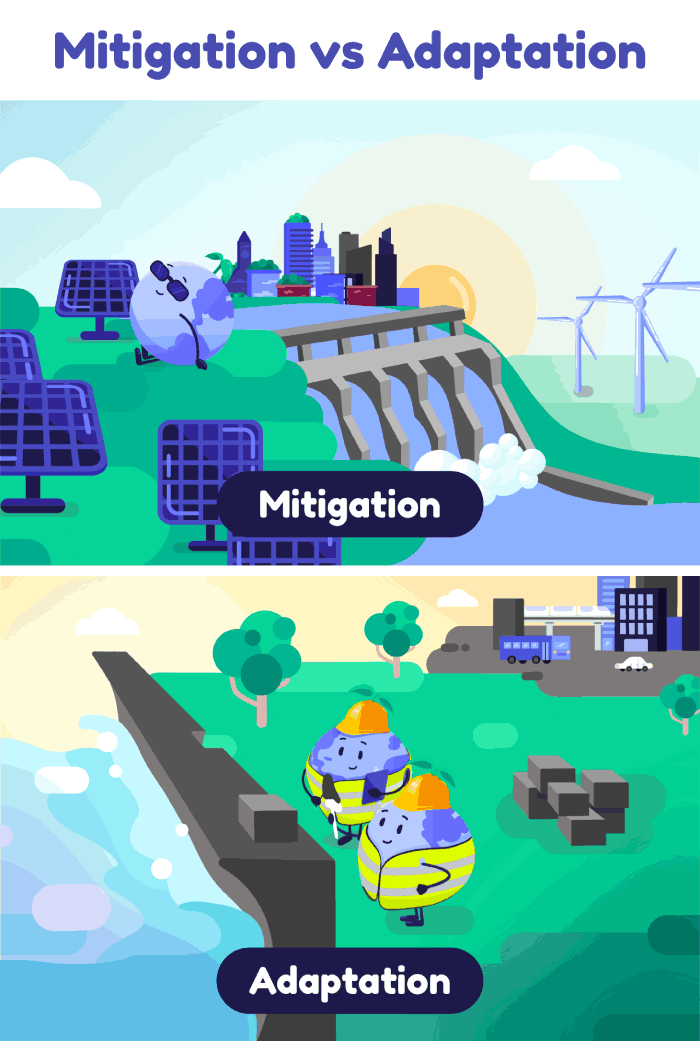
Mitigation vs Adaptation
Climate change adaptation is any action that allows us to continue to meet our basic needs (food, water, health, shelter) by adjusting to climatic changes . Adaptation can either be planned in advance or work as a reaction to change
. It can help reduce the negative impacts of climate change, or even make the most of its potential benefits
.
When deciding how to adapt, we need to be careful to avoid maladaptation . This is where the choices we make now end up increasing our risk further down the line
.

Maladaptation
Should we adapt?
You might be thinking that adaption sounds a bit like giving up. Surely we should focus all our efforts on stopping climate change in the first place? Well, adaptation has a couple of important benefits :
- Preventing future losses (eg. damage to buildings, ill health)
- Providing economic opportunities
- Creating wider social and environmental benefits
Basically, adapting in clever ways can provide us with a safety net whilst helping reduce the potential damage predicted by climate models . In other words, the more successful we are at adapting to climate change, the lower the potential impacts on our society will be
. Check out the graph below to see how adaptation could help us cope with a wider range of climatic conditions
.
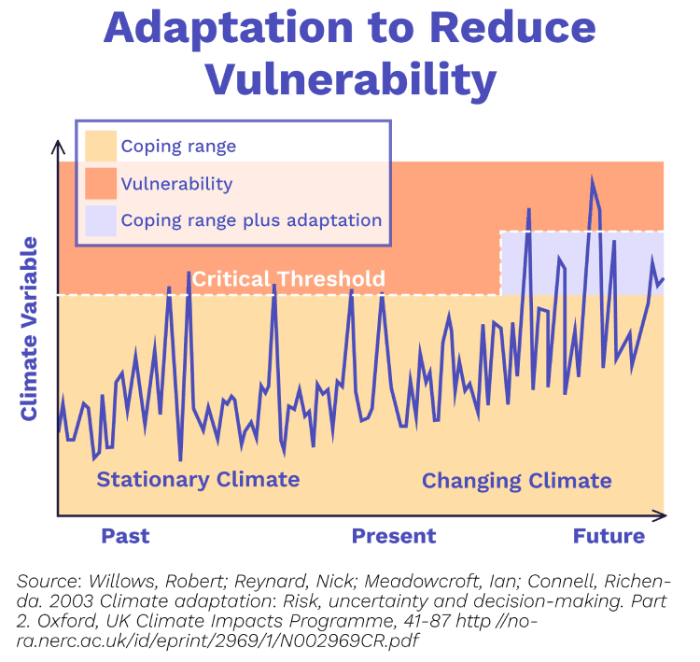
Adaptation to reduce vulnerability
In fact, you may be surprised to learn that many people are already adapting – from small-scale rain gardens that collect stormwater to the relocation of whole communities like the Isle de Jean Charles in the USA
.
Therefore, the important question is not should we adapt but how do we adapt – what should be the scale and speed of our response ?
As climate change progresses, the harder it will be to adapt . Therefore, most scientists agree that we need both mitigation and adaptation in the fight against climate change
.
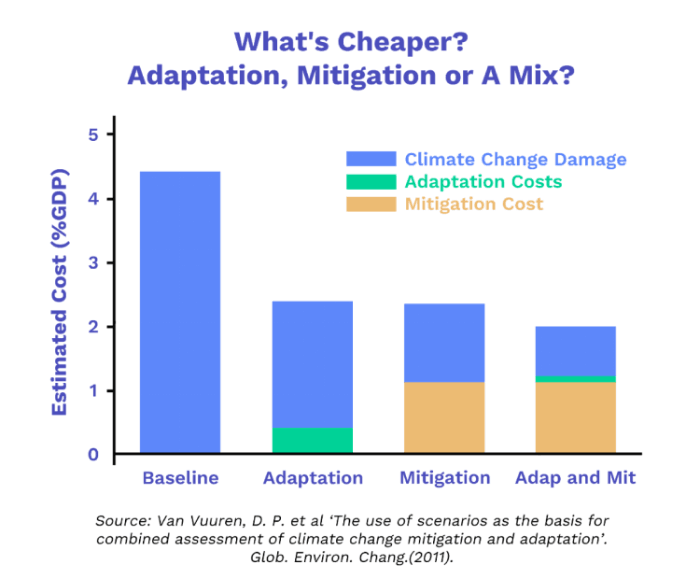
Costs of Adaptation and Mitigation
The tricky part is striking a balance between the two given our limited time and resources . If done effectively, however, a balanced approach is likely to be the cheapest option over time.
What will it cost?
Good question - the World Bank estimates that adapting to 2°C of warming will cost $70-100 billion USD per year between 2010-2050 . However, the costs and benefits will vary by location and also by how much we choose to invest in the first place
.
One thing researchers tend to agree on is that the cheapest way to adapt is to start now . This is because as the climate changes, the cost of adaptation increases
and we start to lose options
. This will also increase our risk of ‘residual damages’, which describe climate change damage that we cannot adapt to
.
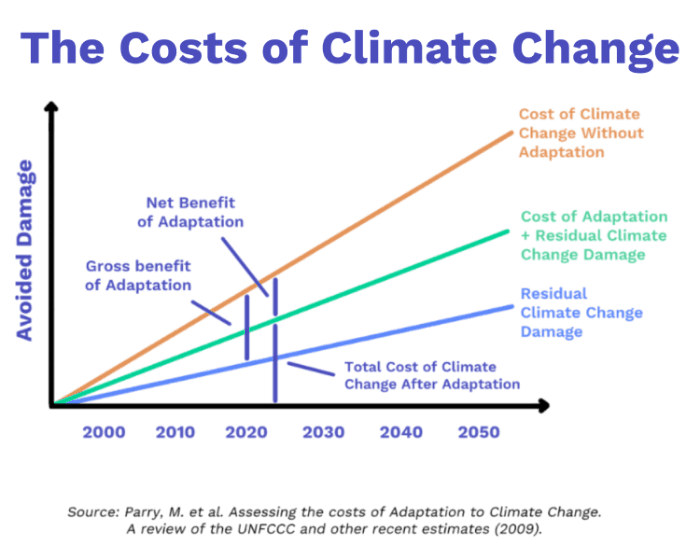
The Cost of Climate Change
With increasing pressure to adapt, however, nearly half of the world’s largest businesses agree that adaptation solutions could create an extra $236 billion USD profit in the short to medium term . This in turn, could create all sorts of knock-on opportunities.
Can every country afford to adapt?
Every country will need to adapt. Yet despite the global threat, many countries who can afford to adapt still haven’t set measurable adaptation targets via national laws and policies .
Existing economic inequalities mean that some countries won’t be able to afford to adapt as much as others . This creates an adaptation gap between low- and high-income countries. This remains a deeply unfair problem
which is likely to worsen between 2030-2050
.
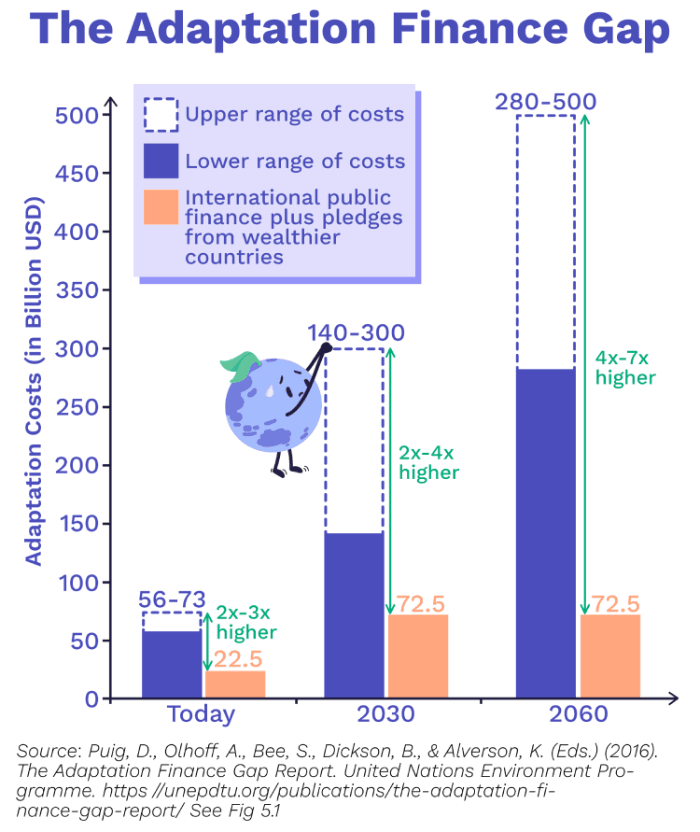
The Adaptation Finance Gap
How do we deal with the adaptation gap?
Crucially, we need to recognise that climate change adaptation should be linked to fair and sustainable development across the globe . This means working to help the populations who are most vulnerable to climate change and finding ways to better fund adaptation in these places
.
What areas of society need to adapt?
Adaptation will be vital for building better societies now and in the future . We need to adapt every sector of our society - from how we get our food and water, to keeping everyone healthy and providing safe shelter.